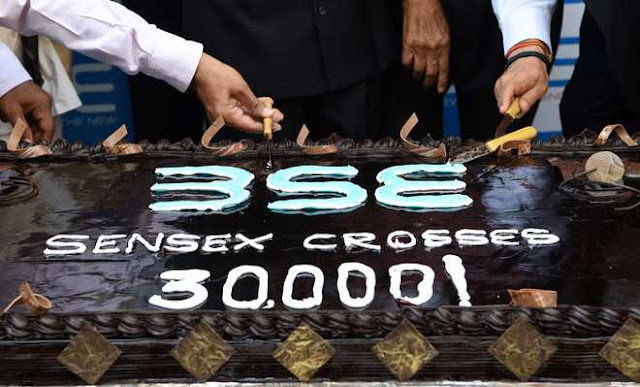Equity and Mutual fund investments are subject to market risks. The fact that investment banks and Asset Management Companies fail to tell you. They want to portray the picture of Sensex as ‘Evergreen Market’ so that you could not miss out investing on ‘The India Story’. On a long-term, investments in India’s stock are strictly a no-miss. But that doesn’t mean that market would not see a downward trend. India needs to upgrade its economy, we still suck at Ease of Doing Business. A recent report by World Economic Forum suggests that India ranks 40th on Competitive Market Index.
As predicted by political experts, Modi wave is likely to clean sweep in 2019 elections. In three years, the opposition has yet not managed to gain popularity even after a controversial decision like demonetisation and issues in GST implementation. With a mandate, Modi may have the power to deal with a more controversial decision like Uniform Civil Code, Article 370, Demonetisation of Rs. 2000 & Rs.500 or even topics like Reservation which have the potential to create security issues across India. India’s stock market, being the pulse of the nation, will react to these political decisions. The shift from oil guzzling vehicles to all electric is likely to create chaos in global markets. A fall in RIL, IOCL, HP, BPCL or the likes of ONGC have the power to shake BSE Sensex.
When we compare historical data, the performance of India’s stock market is fascinating. 20 years ago, BSE Sensex index for September 1997 series ended at 3902 points. The September series of 2017 ended at approx. 31,200 points. A rise of average 12% per year and much more income generated than bank fixed deposits. Numbers have the power to deceive us. Here’s how the investment bankers would say, “If you had invested Rs 1,00,000 in the stock market in 1997, today you would have a disposable income of more than Rs. 12,00,000”. But they would ignore the fact that in 1997, a sum of One Lakh rupees was really a big amount and most of the middle class would not have such huge savings.
The future, like any complex problem, has far too many variables to be predicted. Quantitative models, historical models, even psychic models have all been tried and have all failed. Mathematicians are struggling to find probabilities in the game of chess. Predicting stock markets is no joke when factors like political stability, global positions and natural disasters cannot be accounted for. The human brain is great at predictions but horrible at long-range forecasting. But, to get in news, organisations like Morgan Stanley, Karvy, Ambit etc publish exaggerated figures about the futures BSE Sensex. Let’s see how they miserably fail.
Claim 1 – Sensex may reach 50,000 by 2018.
Date of Claim – January 2013
Organisation – Morgan Stanley
Reality – With the wake of demonetisation and lacklustre implementation of GST, the GDP of India has narrowed to 5.7%. BSE Sensex currently at 31,400 points may see a correction of 1500 to 2000 points in next 6 months. GDP is expected to improve significantly with government infrastructure spending and improved digitisation. Financial experts suggest, that a turnaround in GDP is expected by Q1 2018. Although, at current scenario of markets and global slowdown, reaching 50,000 points by 2018 is far from possible.
Claim 2 – Sensex seen at 1,00,000 by 2020
Date of Claim – June 2014
Organisation – Karvy
Reality – Being humans, we all don’t have the capability to predict the future. No analyst at Karvy would have predicted the historic reforms of 2016. Although, the stock market had no negative effect on its index. Even after demonetisation, we saw a historic IPO of Avenues Supermart which gave almost double returns in just a few days. Karvy’s claim of Sensex reaching 1,00,000 has no numeric backing and is mere speculation. Looking at current levels of GDP growth and market trajectory, we may fall short with 60,000 or even more.
Claim 3 – Sensex can cross 1,00,000 mark in 10 years
Date of Claim – October 2017
Organisation – Morgan Stanley
Justification – India’s economy is expected to reach $6 trillion mark on account of JAM troika, improved digitisation and infrastructure spending. There are no doubts about India’s shining growth story. Future earnings from stock market are impossible to predict. Wall Street expert Peter Bernstein has said that our stock market excel sheets are bogus as they are based on faulty maths. Stock market earnings only earn you around 8% in counted for inflation. These so-called stock market experts have failed to predict every single stock market crash. To summarise, I would like to quote Keynes – In long term, we all are dead. It is likely to note that Yashwant Sinha and Manmohan Singh also quoted Keynes recently. Keep investing!
- Chaitanya Kulkarni


No comments:
Post a Comment